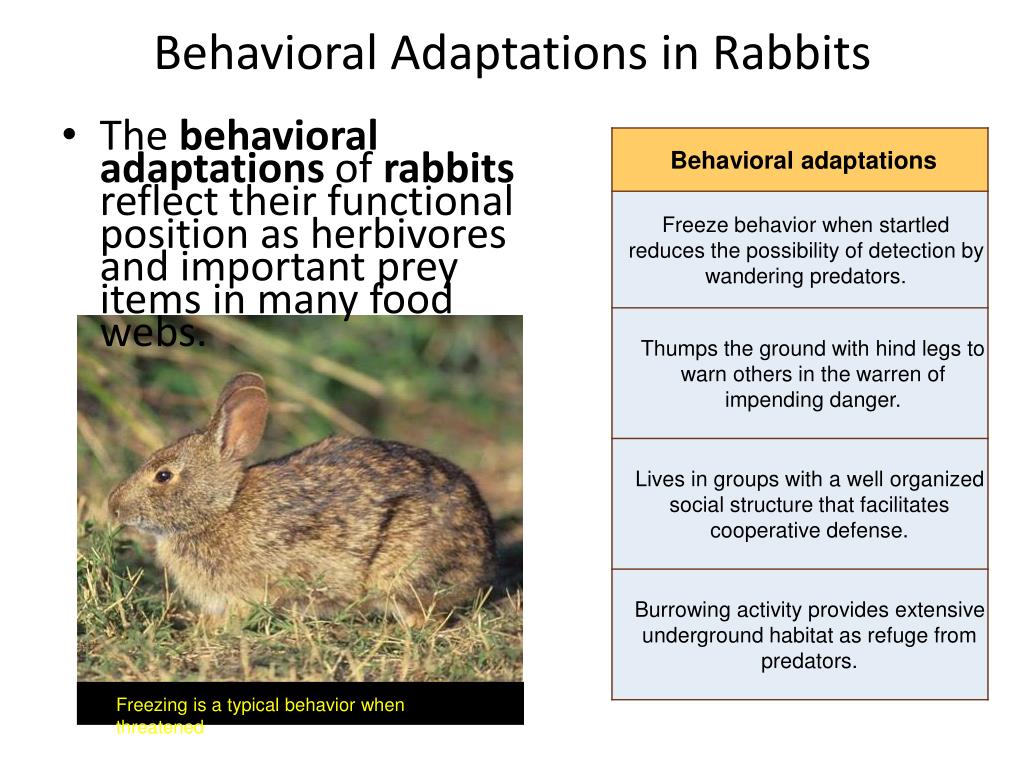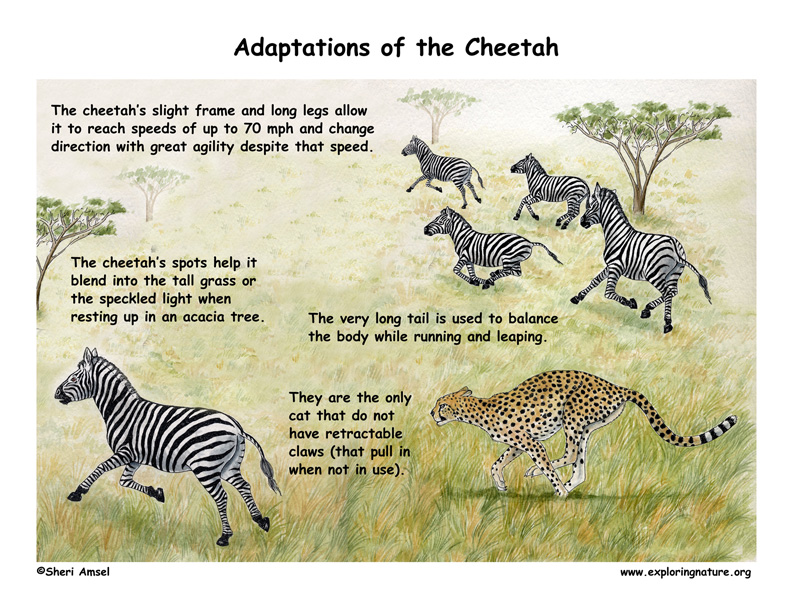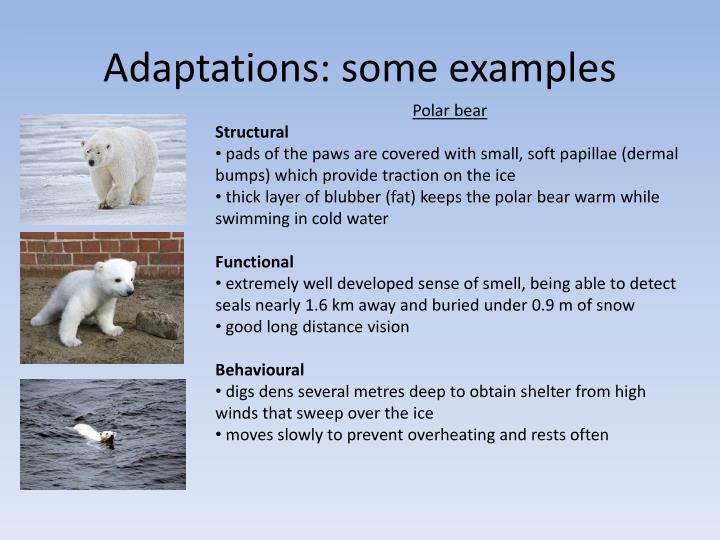Webbed feet in most aquatic animals, swimming is a must. In most aquatic animals, swimming is a must.

PPT Adaptations PowerPoint Presentation, free download
Among them are webbed feet, sharp claws, whiskers, sharp teeth, large beaks, wings, and hooves.

Functional adaptations in animals. Its nostrils can be closed to. Functions of animal adaptations the following shows a list of adaptations found in animals. To keep cool, animals have created mechanisms to encourage air circulation around their bodies and to dissipate heat.
To protect itself from the blowing sand of the desert, a camel has two rows of long and thick eyelashes. These animals have adapted to their environments, including climate, terrain, and available plantlife. The shape of a bird’s beak helps them to eat food as well as make nests.
Some traits, on the other hand, lose their function when other adaptations become more important or when the environment changes. Trunk musculature of a teleost fish, partly dissected to show internal arrangement of the muscle bands (myomeres). The scratching of trees is a behavioural adaptation.
To aid swimming, many animals have adapted and evolved with webbed feet. For example a bird doing a barrel roll to escape a hawk, or male dogs marking their territory. Adaptation to environment is one of the basic characteristics of the living organisms.
Dragonflies are unique, they have big eyes, spikey legs. Animals adapt both physically and behaviorally, depending on their environments. Functions of animal adaptations the following shows a list of adaptations found in animals.
These adaptations help the organisms to survive in their natural habitat. Horses and zebras have flat teeth for grinding their food (grass), while lions have sharp teeth for tearing their food (meat.) to escape predators, zebras also have excellent hearing and eyesight and powerful legs for running and kicking. Living organisms are plastic and posses the inherent properties to respond to a particular environment.
Many animals have developed specific parts of the body adapted to survival in a certain environment. Give the function of each adaptation and name the animal. Adaptation by organisms in relation to environments.
These are special attributes that involve some parts of an organism’s body, such as skin, colour and shape. However thoes are just physical adaptations, the way the dragonfly functions is a different adaptation all together. Many animals have developed specific parts of the body adapted to survival in a certain environment.
Behavioural adaptations are responses made by an animal in a situation. Such traits are called exaptations. Bluefin tuna, showing adaptations for fast.
All kinds of body parts may be adaptations. Types of adaptations in animals and plants are categorized according to their function and the response observed. These are two different types of inactivity where the metabolic rate slows down so much that the animal can survive without eating or drinking anything.
Animal adaptations help animals stay alive either by protecting them from predators or making it easier to catch prey. A mammal’s adaptations for attack and defense and its specializations for finding, capturing, chewing, swallowing, and digesting food all determine a mammal’s shape and habits. A waterproof eggshell, for example, is a functional adaptation that arose among reptiles in response to the need to lay eggs in dry, dessicating environments where permeable eggshells would have dried.
Functional adaptions are structures an animal needs to be able to function, so a fish living in water has gills to enable it to breath and function. Physical adaptations are special body parts, such as shapes, skin, and color, that help the organisms to survive in their natural habitat. For example, the poison dart frog produces poison without thinking about it.
Teeth, perhaps more than any other single physical characteristic, reveal the. Animals have a wide range of structural adaptations including sharp claws to catch prey, dig burrows or scratch trees to signal territories. It is suitable for younger children a worksheet on sorting animals by their adaptations for winter which ca.
Some organs in an animal body function differently when certain changes occur in the environment. A functional adaptation is a structure or behavior that has arisen sometime in the evolutionary history of a species to aid in that species’, or its predecessors’, survival. To aid swimming, many animals have adapted and evolved with webbed feet.
Fur turns white during the cold snowy winter months function: Bullet shapped bodies and powerful wings. Functional adaptations and bioinspired designs.
Feathers were probably first adaptations for tactile sense or regulating temperature. Camels have a thin layer of fur underneath their bellies to help lose heat, while a thicker layer across theit humps shade them. For example, when a dragonfly is in danger of predation, they begin to flap their wings faster.
The poison dart frog releases poison through its skin wihtout realising it. Among them are webbed feet, sharp claws, whiskers, sharp teeth, large beaks, wings, and hooves. The myomeres are folded into a complex, nested grouping, an arrangement that favors stronger and more.
The dart frog sometimes puffs out its vocal cords to produce a muthful of poison the spit. The posion dart frog has many functional (physiological) adaptations. Later, feathers became longer and stiffer, allowing for gliding and then for flight.
A good example of an animal adaptation is the way in which an animal moves from one place to another.

PPT Adaptations of organisms PowerPoint Presentation

PPT Adaptations of organisms PowerPoint Presentation
Adaptations in different biomes notes

Adaptations of Desert Organisms!! by ilias29
tlb recht und steuern in frankreich · canada goose
Geography for the IGCSE wiki March 2016
Geography for the IGCSE wiki March 2016

Adaptations in different biomes notes

Animal adaptations introduction

Adaptations & Natural Selection 8TH GRADE SCIENCE

Behavioral adaptations YouTube
Adaptations in different biomes notes
Animal adaptations introduction

Animal adaptations introduction Animal adaptations

Give an example of structural adaptation


